Submissions
All submitted material, including articles and reviews, should be sent by email to the editors (saga@sogufelag.is). All submissions should be in accordance with the Saga Style Manual.
The editors bear editorial responsibility for all the journal’s material. As always, authors of articles and other material in Saga are responsible for their text in accordance with general publication standards. The Historical Society and editors of Saga operate in accordance with the Codex Ethicus of the Icelandic Association of Historians.
All manuscripts should be submitted to Saga electronically as Word documents. Each page should be numbered and have 3 cm margins, double spacing, and 12 pt font. The first page should contain the name of the article as well as the author’s name, address, phone number, and email address. The submission should also include a short author bio including year of birth, latest degree obtained, and current affiliation. Please submit all manuscripts to saga@sogufelag.is
The editors of Saga will consider articles written in either Icelandic or English. If accepted, articles written in English will be peer reviewed in that language before they are translated into Icelandic. The journal will select a professional translator, but it is expected that authors provide the funds for such translations. If the author, editors, and publishers are all in agreement, the original English version of the article may also be published on the Saga website.
The maximum length of peer-reviewed articles is 10,000 words, including footnotes. Articles that exceed that limit are not considered for publication. Opinion pieces and other articles that are not subject to a peer-review process should not exceed 8,000 words.
Articles should be accompanied by a short abstract (8–10 lines), as well as a longer abstract (ca. 400 words) that is printed after the article. The longer abstract is always in English, regardless of the original language of the article itself. Both abstracts will be published on the Saga website.
Should authors wish to thank institutions, associations, or individuals in their article, the appropriate place is in the first footnote, following the first sentence. If the article is based on a thesis, lecture, or other previous project, the author can clarify this in the same location. The title itself should not contain any note numbers, nor should the abstracts.
Tables and illustrations should be numbered in the order they appear in the article. For each figure, please provide an appropriate title (appearing above the figure) followed by sources and further explanation if needed (appearing below the figure). This can be provided in a separate document. The manuscript of the article should contain an indication of where these figures should appear.
If the author would like images or other figures to accompany the article, they must notify the editors and help provide these figures. Authors should write captions for the figures in cooperation with the editors. Figures can only be featured if the author and editors agree on their inclusion.
Book reviews
Book reviews should be a maximum of 1,500 words, but exceptions can be made for groundbreaking works of research, multivolume works, or extensive surveys. The final word length is decided by the editor. Authors should follow the Saga Style Manual.
Each reviewer is responsible for their review. The Board of the Historical Society does not take positions when it comes to the content of reviews or other material in Saga.
The title of the review should include name of the author, the book’s title, year and place of publication, number of pages, and other bibliographical information.
Examples:
Björn Þorsteinsson og Bergsteinn Jónsson, ÍSLANDSSAGA TIL OKKAR DAGA. Helgi Skúli Kjartansson bjó til prentunar; Hrefna Róbertsdóttir valdi myndir; Anna Agnarsdóttir, Gunnar F. Guðmundsson og Magnús Þorkelsson sáu um útgáfuna. Sögufélag. Reykjavík 1991. 539 bls. Myndir, kort, töflur, atriðisorða-, staða- og mannanafnaskrár.
Guðmundur Hálfdanarson, ÍSLENSKA ÞJÓÐRÍKIÐ – UPPRUNI OG ENDIMÖRK. Íslensk menning. Ritstj. Adolf Friðriksson og Jón Karl Helgason. Hið íslenska bókmenntafélag. Reykjavík 2001. 310 bls. Mannanafnaskrá.
KVENNASLÓÐIR. Rit til heiðurs Sigríði Th. Erlendsdóttur sagnfræðingi. Ritstj. Anna Agnarsdóttir, Erla Hulda Halldórsdóttir, Hallgerður Gísladóttir, Inga Huld Hákonardóttir, Sigríður Matthíasdóttir og Sigríður K. Þorgrímsdóttir. Kvennasögusafn Íslands. Reykjavík 2001. 535 bls. Myndir, ritaskrá, mannanafnaskrá.
The following issues should be kept in mind while writing the review:
- What is the gist of the book’s subject and main argument? Precise descriptions of its contents should be avoided.
- What questions is the author trying to answer? Do they answer those questions?
- Does the author shed light on new sources and/or documents? How do they handle the sources?
- What theories and methods does the author use? Are they appropriate?
- Does the author consider previous research in their field, and how does their work stand in comparison to previous research?
- Does the work create new knowledge or understanding of its subject?
- The reviewer should support all criticism with examples and sound reasoning. Listing typos and other minor errors is unnecessary unless indicative of a larger problem. A book review should involve material criticism, not proofreading.

